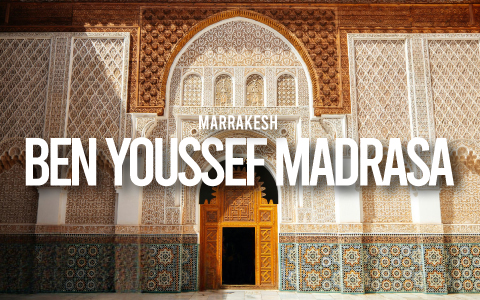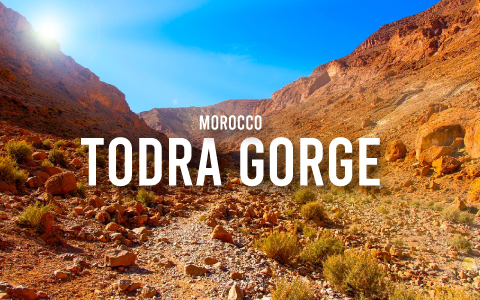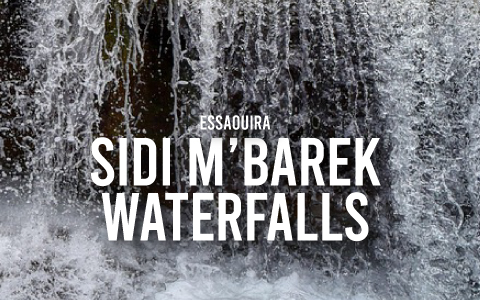
Exploring The Ben Youssef Madrasa In Marrakesh
In the heart of the Moroccan city of Marrakesh, the Ben Youssef Madrasa is the place where you can discover part of the country’s rich cultural and architectural heritage. This historic Islamic college, once the largest in North Africa, offers a journey through time and aesthetics that you won’t miss.
A Glimpse into the History of Ben Youssef Madrasa
The Ben Youssef Madrasa was founded in the 14th century during the reign of Sultan Abu al-Hassan, part of the Marinid dynasty. However, the structure that stands today mainly reflects the extensive 16th-century reconstruction undertaken by Sultan Abdallah al-Ghalib, of the Saadian dynasty famous for the Saadian tombs you can visit in Marrakesh. Named after the Almoravid Sultan Ali ibn Yusuf, who significantly contributed to Marrakesh’s development in the 12th century, the Madrasa was an educational hub for nearly 400 years, closing its doors as a functioning school in 1960. As a theological college, it was dedicated to the study of the Quran and Islamic law, hosting up to 900 students at its peak.
What to Expect form a Visit to the Madrasa
The architecture of the Ben Youssef Madrasa is a splendid example of Islamic art, characterized by intricate geometric patterns, arabesques, and detailed calligraphy.
The layout centers around a large rectangular courtyard, which is quintessential to Islamic educational institutions. At the heart of this courtyard is a shallow pool that reflects the surrounding ornate structures, creating a serene and contemplative atmosphere.
The Madrasa’s entrance is marked by a large wooden door adorned with elaborate carvings. Upon entering, visitors are greeted by the sight of exquisite zellij (mosaic tilework) that decorates the lower portions of the walls, while the upper parts boast finely carved stucco and cedar wood. The tiles, in shades of green, blue, yellow, and white, form complex geometric patterns that exemplify the mastery of Moroccan artisans.
Several features inside the Ben Youssef Madrasa stand out for their beauty and craftsmanship:
- Student Cells: The Madrasa includes 132 small dormitory cells arranged around the courtyard. These rooms provide a glimpse into the modest living conditions of the students who once studied here.
- Prayer Hall: The prayer hall, with its mihrab, is a highlight due to its spiritual and artistic importance. The word mihrab refers to a semicircular niche carved into the wall of the prayer hall indicating the direction of Mecca. The mihrab of Ben Youssef Madrasa is particularly notable for its elaborate decoration, combining stucco, wood, and tilework to create a focal point of artistic and spiritual significance.
- The Ceilings: The cedar wood ceilings in various parts of the Madrasa are richly carved and painted, adding another layer of artistry to the building’s interior.
- The Caliphate-Era Marble Basin: It is an exquisitely carved marble basin, a relic from the Caliphate era of Cordoba. This remarkable artifact showcases the intricate craftsmanship characteristic of the period, featuring detailed floral and geometric patterns that reflect the artistic sophistication of Al-Andalus. The basin’s presence in the Madrasa underscores the historical connections between Morocco and Islamic Spain, offering visitors a tangible link to the rich cultural exchanges that have shaped the region’s heritage. This beautifully preserved piece adds an extra layer of historical and artistic significance to the madrasa.
Getting to the Madrasa
The Ben Youssef Madrasa is conveniently located in the heart of Marrakesh’s historic Medina, making it easily accessible for visitors.
- By Foot: For those staying in or near the Medina, walking to the Madrasa is a great option. The Medina’s narrow, winding streets are best explored on foot, allowing visitors to soak in the vibrant atmosphere and discover other nearby attractions.
- By Taxi: Taxis are readily available throughout Marrakesh. Simply ask the driver to take you to the Ben Youssef Madrasa.
- By Public Transport: Marrakesh has a network of buses that can take you close to the medina. From the bus stop, it’s a short walk to the Madrasa. However, navigating the bus system may be challenging for first-time visitors.
- Guided Tours: Many guided tours of Marrakesh include a visit to the Ben Youssef Madrasa. This can be an excellent option for those who want to learn more about the history and significance of the site from knowledgeable guides.
If you are planning a trip to Marrakesh, remember to visit other attractions such as Jemaa el-Fnaa Square, the Majorelle Gardens, or the Koutoubia Mosque. If you have time, plan to spend a night in the desert or to reach other fascinating destinations, such as the city of Essaouira or the Ourika Valley.



